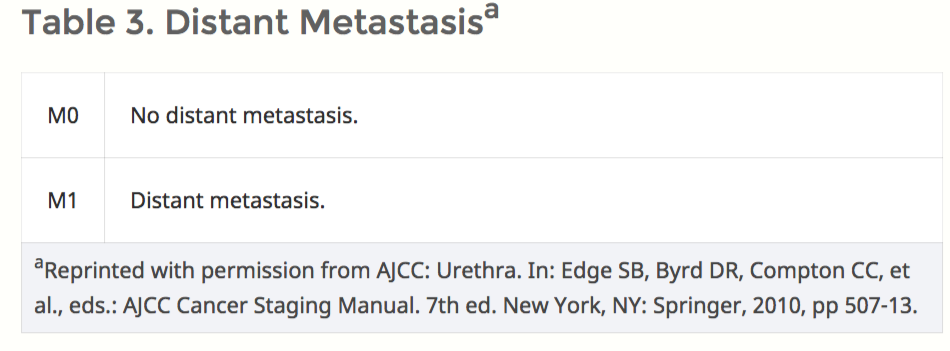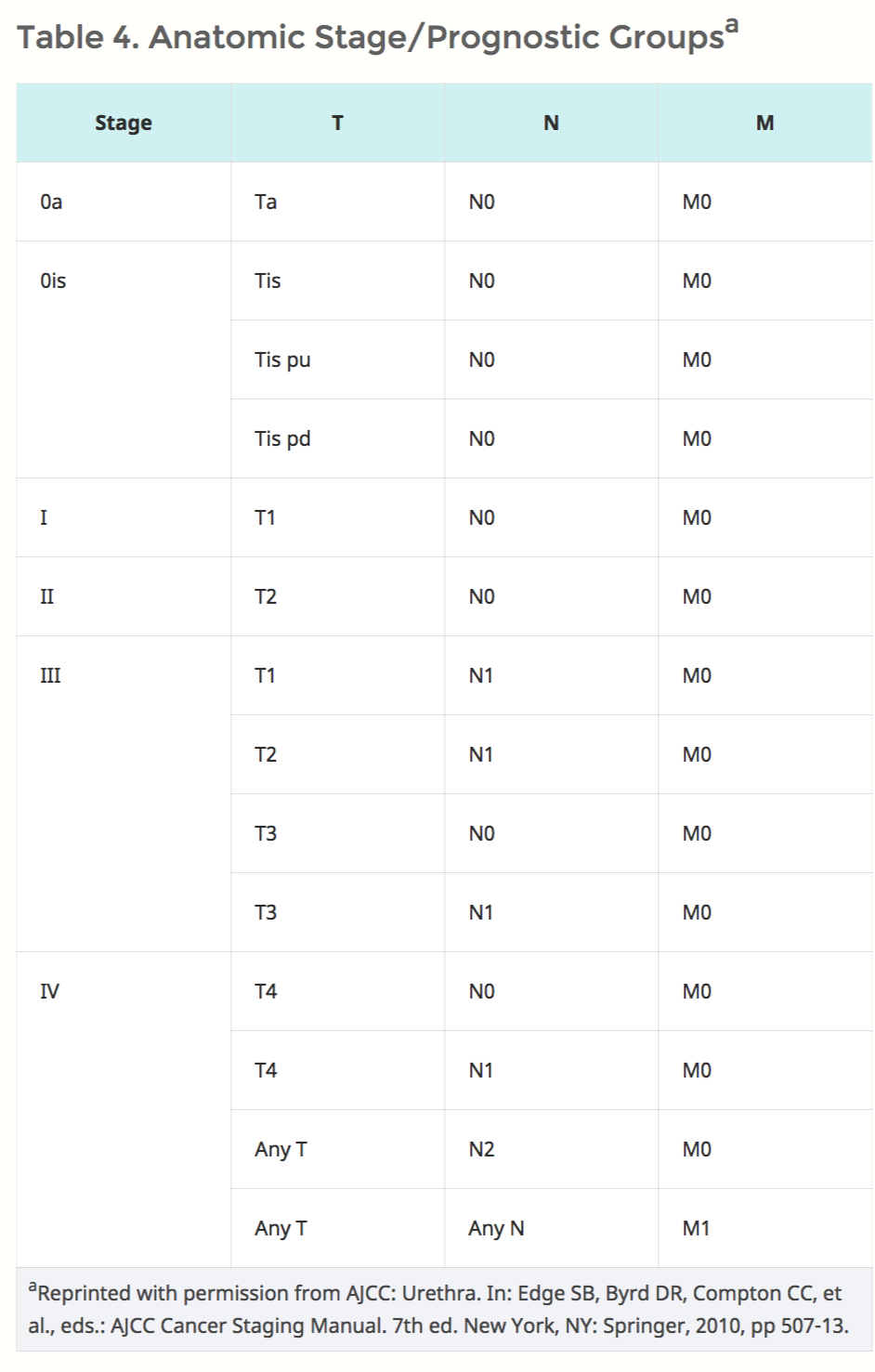Urethral cancer staging
|
Urethral cancer Microchapters |
|
Diagnosis |
|---|
|
Treatment |
|
Case Studies |
|
Urethral cancer staging On the Web |
|
American Roentgen Ray Society Images of Urethral cancer staging |
|
Risk calculators and risk factors for Urethral cancer staging |
Editor-In-Chief: C. Michael Gibson, M.S., M.D. [1]
Overview
The staging of urethral cancer is based on the TNM system. Moreover, it may be classified into 5 subtypes based on the depth of invasion.
Staging
Stage Definitions by Depth of Invasion
- Stage 0 (Tis, Ta): Limited to mucosa
- Stage A (T1): Submucosal invasion
- Stage B (T2): Infiltrating periurethral muscle or corpus spongiosum
- Stage C (T3): Infiltration beyond periurethral tissue
- Female: Vagina, labia, muscle
- Male: Corpus cavernosum, muscle
- Stage D1 (N+): Regional nodes; pelvic and inguinal
- Stage D2 (N+, M+): Distant nodes; visceral metastases
Definitions of TNM [1]
The American Joint Committee on Cancer has designated staging by TNM classification to define urethral cancer.




References
- ↑ National Cancer Institute. Physician Data Query Database 2015. http://www.cancer.gov/publications/pdq